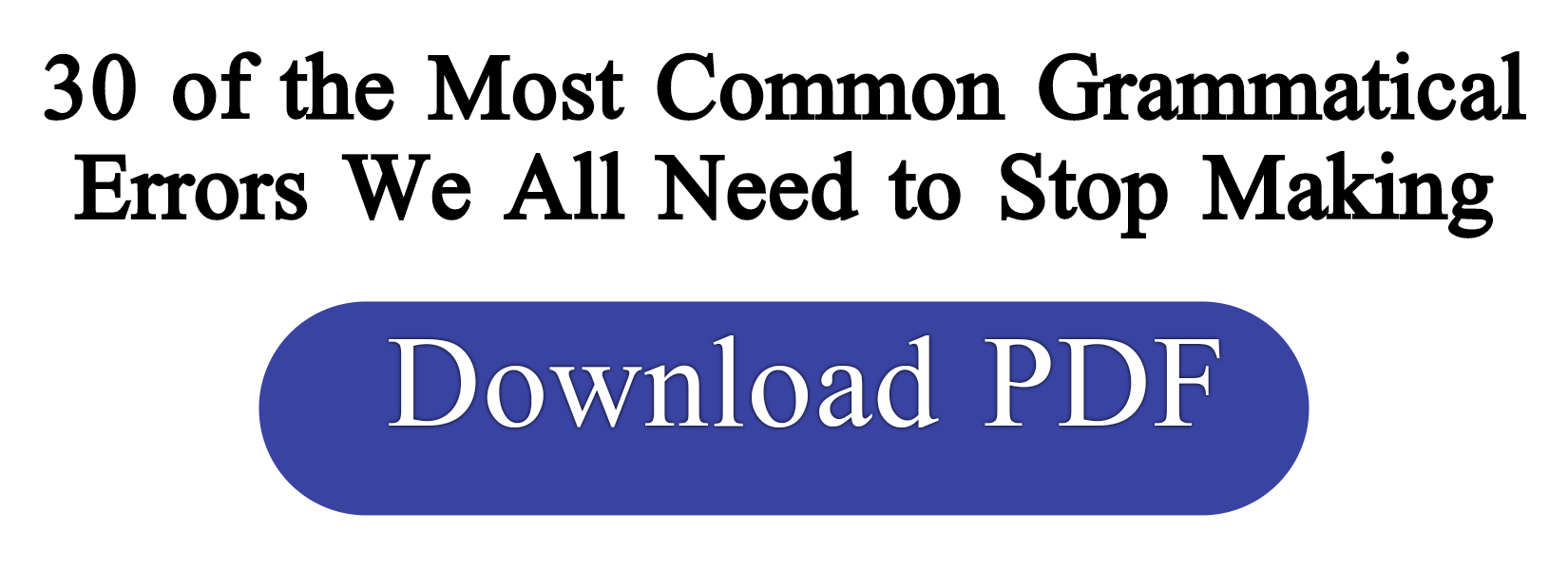Prepositions for Time, Place, and Introducing Objects
On prepositions
Prepositions are keywords that indicate the start of a prepositional phrase. A prepositional phrase begins with the first preposition in the sentence and ends with
the object or noun of the phrase. For example, “She sat on the red carpet while reading.” The italicized portion is a prepositional phrase. Generally, prepositional phrases act as adverbs or adjectives in that they modify either verbs, adverbs, or adjectives. This section will demonstrate how to use prepositions for time, place, and objects in American English.
One point in time
“On,” “at”, and “in” are used to describe a moment in time.
On is used with days:
- I will see you on Monday.
- The week begins on Sunday.
At is used with noon, night, midnight, and with the time of day:
- My plane leaves at noon.
- The movie starts at 6 p.m.
In is used with other parts of the day, with months, with years, and with seasons:
- He likes to read in the afternoon.
- The days are long in August.
- The book was published in 1999.
- The flowers will bloom in spring.
Extended time
To express extended time, English uses the following prepositions: since, for, by, from—to, from-until, during, (with)in
- She has been gone since yesterday. (She left yesterday and has not returned.)
- I'm going to Paris for two weeks. (I will spend two weeks there.)
- The movie showed from August to October. (Beginning in August and ending in October.)
- The decorations were up from spring until fall. (Beginning in spring and ending in fall.)
- I watch TV during the evening. (For some period of time in the evening.)
- We must finish the project within a year. (No longer than a year.)
Place
To express notions of place, English uses the following prepositions:
In: to talk about an object being contained.
Inside: to refer more specifically to where the object is contained.
On: to talk about the surface.
At: to talk about a general vicinity.
- There is a wasp in the house. (The wasp is contained in the house.)
- Go look inside the refrigerator. (Inside is used as a specific place, the inside of the refrigerator.)
- I left your keys on the table. (The keys are on the surface of the table).
- She was waiting at the corner. (The corner is a general location she was waiting at.)
Higher than a point
To express notions of an object being higher than a point, English uses the following prepositions: over, above.
Over: to talk about an object that has moved higher and wider than another object.
Above: to talk about an object that has moved higher than another object.
- He threw the ball over the roof. (The ball is somewhere past the height and width of the roof.)
- Hang that picture above the couch. (The picture should be higher in relation to the couch.)
Lower than a point
To express notions of an object being lower than a point, English uses the following prepositions: under, underneath, beneath, below.
Under: to describe an object that is below a general point
Underneath: to describe something that is below a more specific point
Beneath: to describe an object that is directly below another object
Below: to describe an object that is lower or less than another object or point
- The rabbit burrowed under the ground. (The rabbit is somewhere underground.)
- The child hid underneath the blanket. (The child hid in a more specific place, a blanket.)
- We relaxed in the shade beneath the branches. (The shade lies specifically right below the branches.)
- The valley is below sea-level. (The valley is somewhere lower than sea-level)
Close to a point
To describe an object as being close to a point, English uses the following prepositions: near, by, next to, between, among, opposite.
- She lives near the school. (She lives in close proximity to the school.)
- There is an ice cream shop by the store. (The ice cream shop is very close to the store.)
- An oak tree grows next to my house. (An oak tree grows beside the house, likely in the yard.)
- The house is between Elm Street and Maple Street. (Elm and Maple Street sandwich the house).
- I found my pen lying among the books. (The pen could be anywhere around the area that the books occupy.)
- The bathroom is opposite that room. (Similar to “next to,” opposite means that the bathroom faces the room, rather than adjoins.)
To introduce objects of verbs
An object of a verb adds specificity to the verb. In terms of prepositional objects, the object is introduced by a preposition. For example, in the sentence, “They fought about the old chair,” which object did they fight over? The chair. When introducing objects of verbs, there are some prepositions that directly follow specific verbs. Below are some examples:
“At” is used with the following verbs: glance, laugh, look, rejoice, smile, stare
- She glanced at her reflection.
(exception with mirror: She glanced in the mirror.) - You didn't laugh at his joke.
- I'm looking at the computer monitor.
- We rejoiced at his safe rescue.
- That pretty girl smiled at you.
- Stop staring at me.
“Of” is used with the following verbs: approve, consist, smell
- I don't approve of his speech.
- My contribution to the article consists of many pages.
- He came home smelling of alcohol.
“Of” (or “about”) is used with the following verbs: dream, think
- I dream of finishing college in four years.
- Can you think of a number between one and ten?
- I am thinking about this problem.
“For” is used with the following verbs: call, hope, look, wait, watch, wish
- Did someone call for a taxi?
- He hopes for a raise in salary next year.
- I'm looking for my keys.
- We'll wait for her here.
- You go buy the tickets, and I'll watch for the train.
- If you wish for an "A" in this class, you must work hard.
Prepositions of Direction: To, On (to), In (to)
Graphics for this handout were developed by Jordan Golembeski.
This handout explains prepositions that express movement toward something: to, onto, and into. First, the prepositions will be introduced as a group. Then, the special uses of each one will be discussed.
To, into, and onto correspond respectively to the prepositions of location at, in, and on. Each pair can be defined by the same spatial relations of point, line/surface, or area/volume. To learn more about the spatial relationships expressed by these pairs of prepositions, read the first section of "Prepositions of Location: At, On, and In" before you start reading this handout.
Introduction
The basic preposition of a direction is "to."
TO: signifies orientation toward a goal
When the goal is physical, such as a destination, "to" implies movement in the direction of the goal.

We flew from New York to Paris. (OR) We flew to Paris.
When the goal is not a physical place, for instance, an action, "to" marks a verb; it is attached as an infinitive and expresses purpose. The preposition may occur alone or in the phrase in order. The two uses can also occur together in a single sentence:
The other two prepositions of direction are compounds formed by adding "to" to the corresponding prepositions of location.
The preposition of location determines the meaning of the preposition of direction.
ON + TO = onto: signifies movement toward a surface
IN + TO = into: signifies movement toward the interior of a volume
("To" is part of the directional preposition toward, and the two mean about the same thing.)

The frog jumped onto the lilypad.

The milk went into the glass.
With many verbs of motion, "on" and "in" have a directional meaning and can be used along with "onto" and "into."
This is why "to" is inside parentheses in the title of the handout, showing that it is somewhat optional with the compound prepositions. Thus, the following sentences are roughly synonymous:
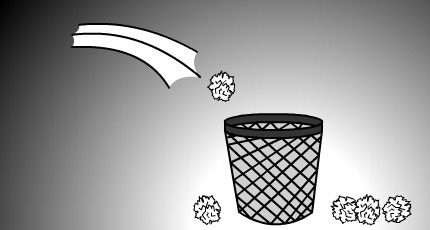
The paper went into the garbage can.
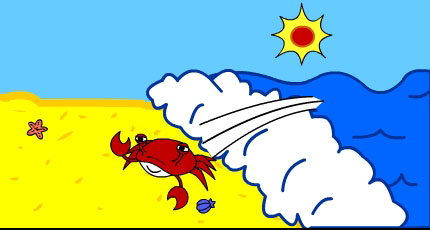
The crab washed up onto the shore.
To the extent that these pairs do differ, the compound preposition conveys the completion of an action, while the simple preposition points to the position of the subject as a result of that action. This distinction helps us understand how directional and locational prepositions are related: they stand in the relationship of cause and effect.
The paper went into the garbage can.
Position of subject: the paper is in the garbage can.
The crab washed up onto the shore.
Position of subject: the crab is on the shore.
See the sections below for some exceptions to this rule.
Uses of "To"
"To" occurs with several classes of verbs.
Verb + to + infinitive
Verbs in this group express willingness, desire, intention, or obligation.
Willingness: be willing, consent, refuse
Desire: desire, want, wish, like, ask, request, prefer
Intention: intend, plan, prepare
Obligation: be obligated, have, need
Examples:
I refuse to allow you to intimidate me with your threats.
I'd like to ask her how long she's been skiing.
I plan to graduate this summer.
Henry had to pay his tuition at the Bursar's office.
In other cases, "to" is used as an ordinary preposition.
Verbs of communication: listen, speak (but not tell), relate, appeal (in the sense of 'plead,' not 'be attractive')
Verbs of movement: move, go, transfer, walk/run/swim/ride/drive/ fly, travel
Except for transfer, all the verbs in listed here can take toward as well as to. However, "to" suggests movement toward a specific destination, while "toward" suggests movement in a general direction, without necessarily arriving at a destination:
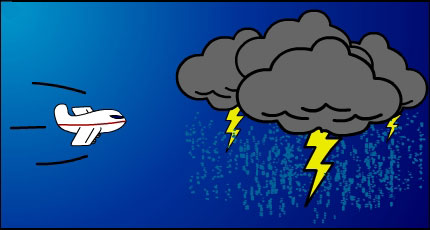
The plane was headed toward a storm cloud.
Additional examples:
(It was headed in the direction of a storm cloud; it may not have reached or flown through the cloud.)
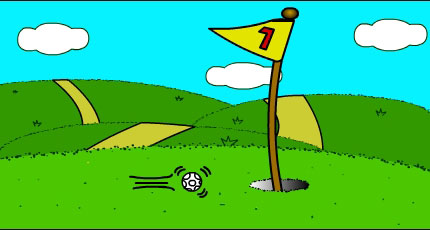
The golf ball rolled toward the hole.
(Drive in the direction of the city limits; turnoff may be before arriving there.)
(I actually want to arrive at the airport.)
Uses of "Onto"
"Onto" can generally be replaced by "on" with verbs of motion.

The hat went on(to) his head.
Dietrich jumped on(to) the mat.
Huan fell on(to) the floor.
Athena climbed on(to) the back of the truck.
Some verbs of motion express the idea that the subject causes itself or some physical object to be situated in a certain place (compare the three example directly above).
Of these verbs, some take only "on." Others take both "on" and "onto," with the latter being preferred by some speakers.
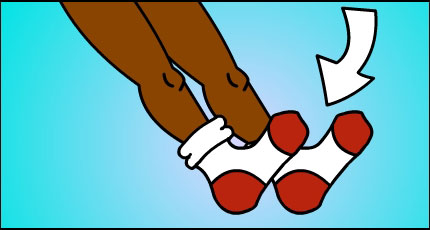
He put the socks on his feet.
The plane landed on the runway. (not "onto" the runway)
Sam hung the decoration on the Christmas tree. (not "onto" the tree)
He placed the package on the table. (not "onto" the table)
Joanna spilled her Coke on the rug. (not "onto" the rug)
Samir moved the chair on(to) the deck.
The crane lowered the roof on(to) the house.
The baby threw the pot on(to) the floor.
Verbs taking only "on" are rare: "set" may be another one, and so perhaps is "put." Other verbs taking both prepositions are "raise," "scatter" (when it takes a direct object), "pour," and "add."
The farmer scattered seed on(to) the fertile ground.
We're adding on a wing at the back of the building.
We're adding a porch onto the house.
In "We're adding on a wing at the back of the building," "on" is really part of the verb, while in "We're adding a porch onto the house," "onto" is a simple preposition. This contrast points to a fairly important and general rule:
Simple prepositions can combine with verbs, but compound prepositions cannot.
Note also that in the first example, "The farmer scattered seed on(to) the fertile ground", the word "on" has its ordinary meaning of a position on a surface — the ground; in the second example, "We're adding on a wing at the back of the building", the surface is vertical rather than horizontal— the side of a building.
There are a number of verb-preposition combinations that are similar to "add on" but have the meaning "of continuing or resuming an action" when used in the imperative mood.
Except for "hang," which takes both "on" and "onto," the following verbs all occur only with "on." The meanings of these combinations, some of which are idiomatic, are given in parentheses. Not all of them have the force of a command.
- Hang on / Hang onto the rope ("continue to grasp tightly")
- Carry on ("resume what you were doing")
- Sail on ("resume or continue sailing")
- Dream on ("continue dreaming"; a humorous way of saying "that is an unattainable goal")
- Lead on ("resume or continue leading us")
- Rock on ("continue playing rock music")

Drive on! (Or, Keep driving toward the city).
Uses of "Into"
With verbs of motion, "into" and "in" are interchangeable except when the preposition is the last word or occurs directly before an adverbial of time, manner, or frequency.
In this case, only "in" (or "inside") can be used.
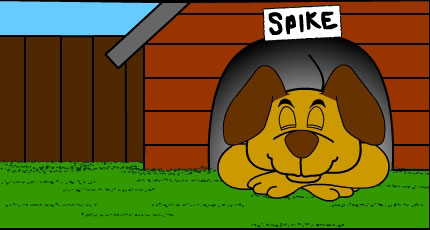
Spike is lying in his house. (Not into.)
The patient went into the doctor's office. The patient went in. (not "into")
Our new neighbors moved into the house next door yesterday. ("to take up residence in a new home'")
Our new neighbors moved in yesterday.
In "Our new neighbors move in yesterday," the last word is the time adverbial yesterday, so the object of the preposition in can be omitted. Of course, in an information question, "into" also can be last word except for an adverbial when its object is questioned by a wh- word:
Now what kind of trouble has she gotten herself into?
Now what sort of trouble is she in?
Verbs expressing stationary position take only "on" or "in" with the ordinary meanings of those prepositions.
If a verb allows the object of the preposition to be omitted, the construction may have an idiomatic meaning.
The cat sat on the mat.
The doctor is in his office.
The doctor is in. ('available for consultation')
"In(to)" has two special uses with "move."
When "move in" is followed by a purpose clause, it has the sense of "approach."
The lion moved in for the kill.
The police moved in to rescue the hostages inside the building.
In "The lion moved in for the kill" and "The Police moved in to rescue the hostages inside the building," "in" is part of the verb, so "into" cannot be used. We cannot say: "The lion moved into for the kill."
When "into" is used with move, it functions as an ordinary preposition to convey the idea of moving something from one place to another.
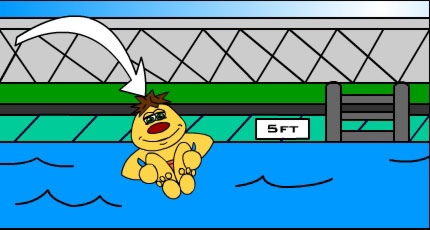
A man is jumping into the pool.

The man is in the pool.
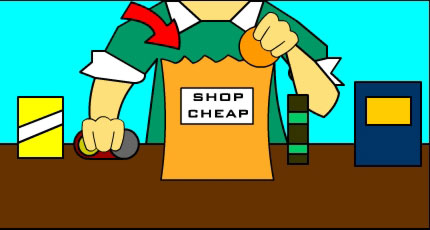
The person is placing groceries into the shopping bag.
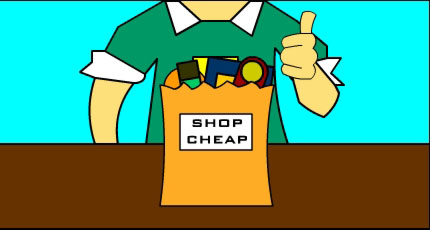
The person has completed putting groceries in the bag.
Prepositions of Location: At, In, On
Graphics for this handout were developed by Michelle Hansard.
Prepositions expressing spatial relations are of two kinds: prepositions of location and prepositions of direction. Both kinds may be either positive or negative. Prepositions of location appear with verbs describing states or conditions, especially be; prepositions of direction appear with verbs of motion. This handout deals with positive prepositions of location that sometimes cause difficulty: at, on, and in.
The handout is divided into two sections. The first explains the spatial relationships expressed by the three prepositions. The second examines more closely the uses of in and on.
Dimensions and Prepositions
Prepositions differ according to the number of dimensions they refer to. We can group them into three classes using concepts from geometry: point, surface, and area or volume.
Point
Prepositions in this group indicate that the noun that follows them is treated as a point in relation to which another object is positioned.
Surface
Prepositions in this group indicate that the position of an object is defined with respect to a surface on which it rests.
Area/Volume
Prepositions in this group indicate that an object lies within the boundaries of an area or within the confines of a volume.
Notice that although in geometry surface and area go together because both are two-dimensional, in grammar area and volume go together because the same prepositions are used for both.
In light of these descriptions, at, on, and in can be classified as follows:
at .... point

on .... surface

in ... area/volume

The meanings of the three prepositions can be illustrated with some sample sentences:
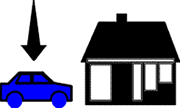

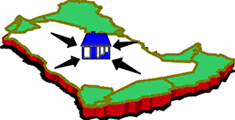
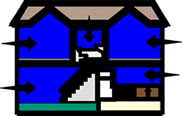

All of these sentences answer a question of the form, "Where is _______?" but each gives different information. Before going on, explain to yourself the spatial relations shown in each sentence.
1) locates a car in relation to a house, understood as a fixed point.
2) treats the house as a surface upon which another object, the roof, is placed.
3) locates the house within a geographical area.
4) treats the house as a three-dimensional structure that can be divided into smaller volumes, namely, rooms, inside one of which is an object, the fireplace.
Using "At"
At calls for further comment. Because it is the least specific of the prepositions in its spatial orientation, it has a great variety of uses. Here are some of them:
Location

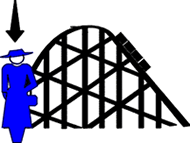
Destination


Direction
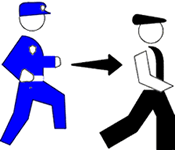

In 5a), the bank can be understood as a point defining Tom's location, much as in 1) above. It makes less sense to think of a fair as a point in 5b) since fairs are usually spread out over a fairly large area. Probably at is used in this case just because it is the least specific preposition; it defines Sue's location with respect to the fair rather than some other place.
In 6a), at exhibits its cause/effect relationship with to, which cannot be used here: arrival at a place is the result of going to it. For more on this relationship, see the handout Prepositions of Direction: To, (On)to, (In)to.
7a) and 7b) show that with certain verbs of motion at may be used with the same meaning as its directional counterpart to, that is, direction toward something.
Choosing Between "In" and "On"
Nouns denoting enclosed spaces, such as a field or a window, take both on and in. The prepositions have their normal meanings with these nouns: on is used when the space is considered as a surface, in when the space is presented as an area:


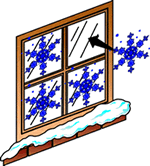

Notice that in implies that the field is enclosed, whereas on implies only that the following noun denotes a surface and not necessarily an enclosed area:

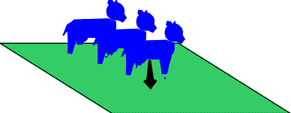
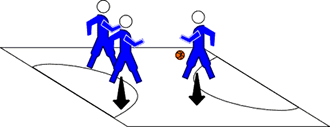

When the area has metaphorical instead of actual boundaries, such as when field means "academic discipline," in is used:
Several common uses of in and on occur with street. The first two follow the general pattern of in and on usage. The third is an idiom that must be learned as a unit.

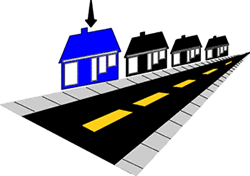
(This is an idiom meaning that he's poor.)
In a), the street is understood as an area enclosed by the sidewalks on either side. Compare b) with the discussion of sentence 3) in the first section. Here, on locates the house on either side of Third Street; it doesn't mean that the street is a surface on which the house sits. Because the street is understood as a line next to which the house is situated, on functions much like at in its normal use; in other words, it locates the house in relation to the street but does not specify the exact address. For that purpose, at is used because the address is like a particular point on the line. Compare: "Our house is at 323 Third Street." In c), out on the street is an idiom meaning "poor" or "destitute."
In and on are also used with means of transportation: in is used with a car, on with public or commercial means of transportation:
on the bus
on the plane
on the train
on the ship
Some speakers of English make a further distinction for public modes of transportation, using in when the carrier is stationary and on when it is in motion.
The passengers sat in/on the plane awaiting takeoff.
Prepositions of Spatial Relationship
Above
Write your name above the line.

Across
Draw a line across the page.
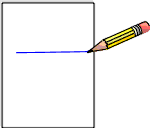
Against
She leans against the tree.
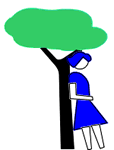
Ahead of
The girl is ahead of the boy.
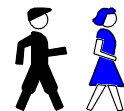
Along
There is lace along the edge of the cloth.

Among
He is among the trees.

Around
Draw a circle around the answer.

Behind
The boy is behind the girl.
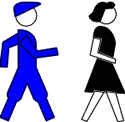
Below
Write your name below the line.

Beneath
He sat beneath the tree.
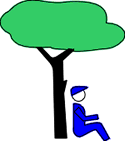
Beside
The girl is standing beside the boy.

Between
She is between two trees.

From
He came from the house.

In front of
The girl is in front of the boy.

Inside
He is inside the house.
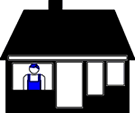
Near
There is a tree near the house.

Off
His hat is off.

Out of
He came out of the house.

Through
She went through the door.
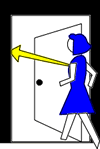
Toward
She is walking toward the house

Under
He is hiding under the table

Within
Please mark only within the circle.






